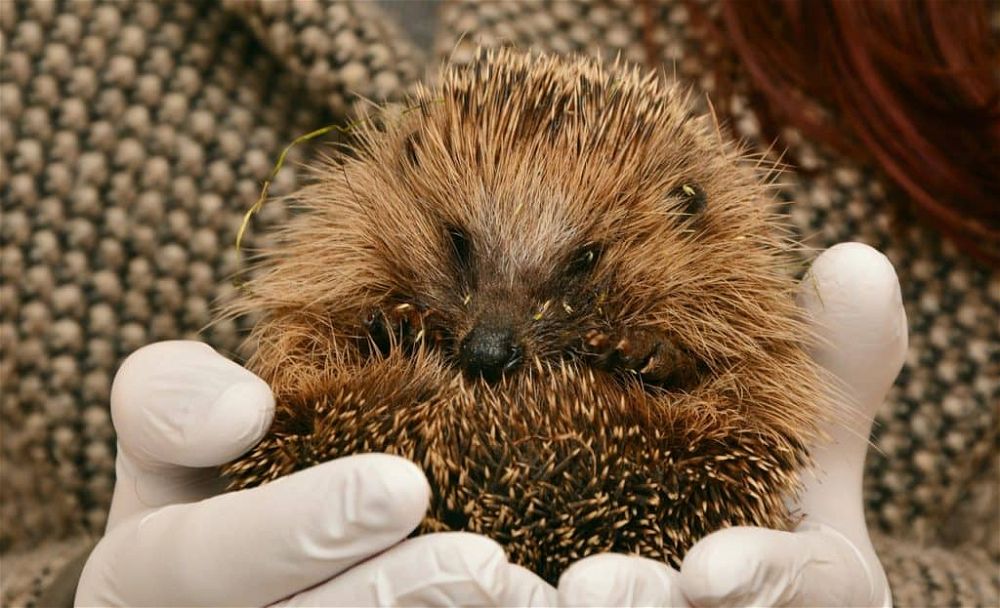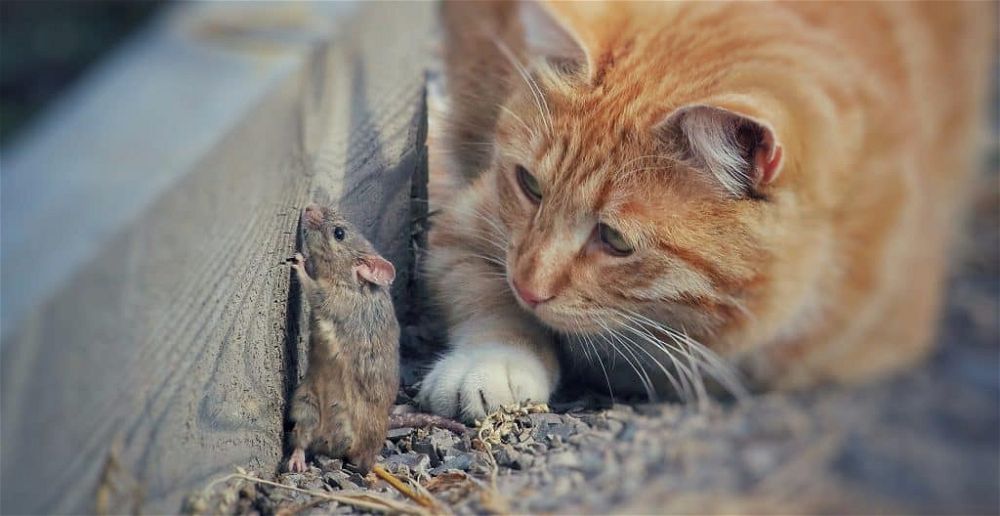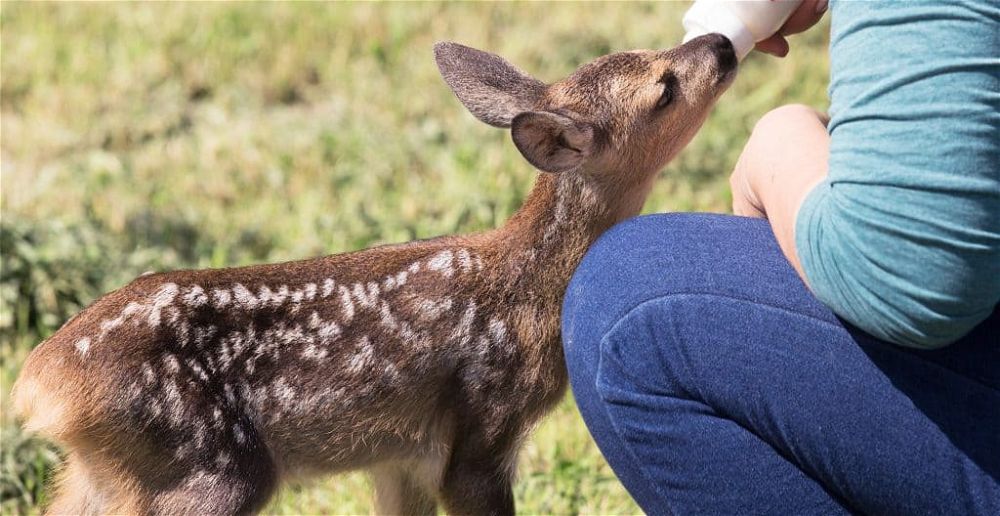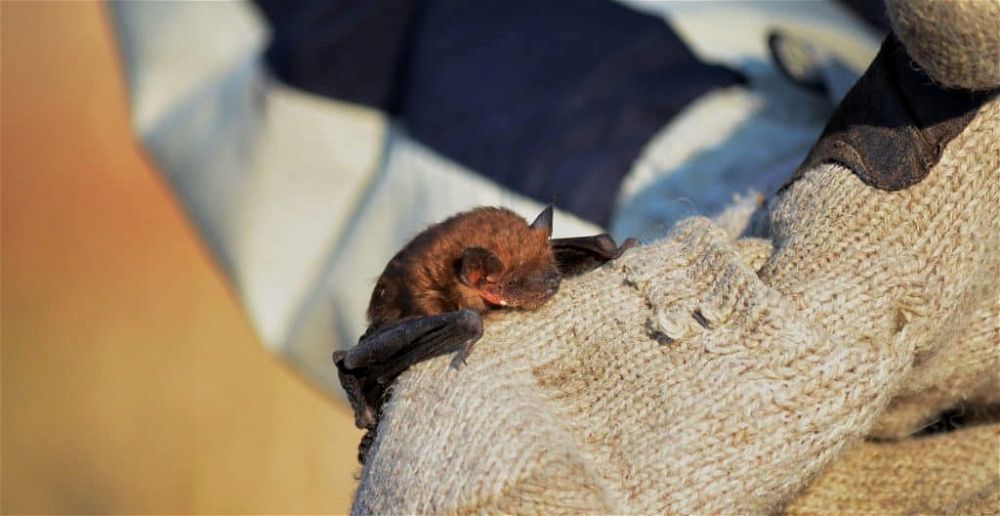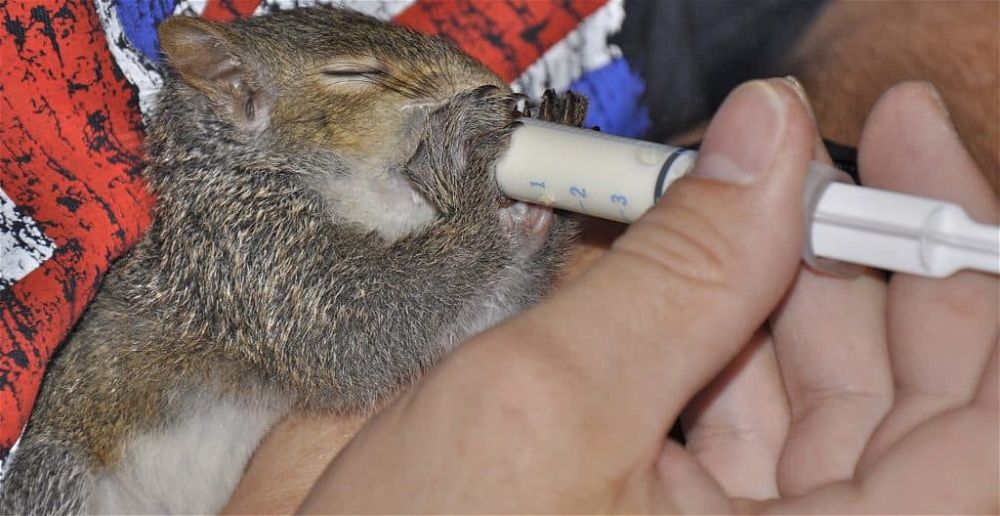
If you’ve ever spotted a wild animal in trouble and wished you could help this guide is for you…
We’re going to cover practical steps you can take to help injured wildlife by running through the most common scenarios – including how to pick the animal up.
The Three Approaches to Wildlife Rescue
There are three approaches to helping wildlife and it can be hard to choose the right course of action, especially if you’re stressed and nervous. If in doubt, call a wildlife rescue centre for advice.
- Leave it alone. Sometimes a wild animal is not injured but has been left by a parent so it can gather food. For example, young deer should not be touched nor should fledgling birds unless they are in danger.
- Let the animal recover from shock in a cool, dark place. A wild animal that’s had a knock, say flying into a window or being hit by a car, could be concussed and may recover given time.
- Take the animal to a wildlife centre or a vet. Injured wildlife needs specialist attention. The most responsible course of action is taking injured wildlife to someone who knows exactly what to do to prevent any further suffering.
First Steps – What You Can Do Today
Get prepared!
Look up your nearest wildlife centre online to find out what wildlife they can treat and where they’re based. This will save stressful emergency phone calls with an injured animal in tow.
We recommend the following websites:
- https://www.rspca.org.uk/adviceandwelfare/wildlife/findarehabilitator
- http://bwrc.org.uk/
- http://www.animalrescuers.co.uk/html/wildcents.html
If you don’t have a pet registered with a vet, also take a look at what 24-hour vets are nearby.
Save the numbers to your phone so they’re ready to go when you find an injured animal.
It’s also worth stashing a cardboard box and towel in your car in case you come across a road injury. Wildlife does have an inconvenient habit of turning up when you are not prepared for it.
So now you have some basic information let’s run through the most common types of wildlife living in the UK and what your course of action should be if you find one injured.
From fluffy to spikey, feathery to scaly – whatever is going about its business in the great outdoors. Here’s what you might find in trouble.
Hedgehogs
Our lovely hoggies are declining at the rate of Sumerian tigers. They get caught in netting, fall into holes, struggle to find water and are injured on the roads. Mr Spike often needs help.
It’s Day Time
A hedgehog out in the day is usually in trouble. They are nocturnal animals and they definitely don’t sunbathe.
The only time you should spot one outside in the daytime is if a mum has rushed out for extra bedding and a chance to feed herself or the hog’s nest has been disturbed. If a hedgehog is moving rapidly with purpose or has a bundle of leaves in its mouth then it should be left alone.
If the hedgehog is collapsed, wobbling, has flystrike (tiny white flecks which are maggots) is making a screaming noise, is caught in something, or your dog has grabbed it then Mrs Tiggywinkle needs immediate help.
Underweight Hogs In Winter
In winter a small hedgehog isn’t likely to survive hibernation. They need to weigh around 600 grams to make it through.
Weigh your hog and if it’s too small call a rescue centre who will hopefully take it in or will give you advice about feeding it through the cold months.
Massive Hedgehogs
Football-sized hedgehogs are suffering from ballooning which is air trapped beneath their loose skin. Take it to a vet or wildlife centre straight away.
White Hedgehogs
If you spot a white hog chances are it’s an abandoned pet.
White African pygmy hedgehogs are trendy pets but they are spikey and nocturnal and not everyone does their homework before buying one.
Abandoned pets won’t survive so grab that guy and take it to a rescue centre or vet. If it turns out to be a rare wild albino hedgehog you can release it where it was found.
How To Pick Up A Hedgehog
Don’t be scared, they don’t bite.
Grab the hedgehog and pop it in a high-sided box. Use gloves or a towel if you have any to hand. If not, touch the hog – it should roll into a ball unless it’s badly hurt. Then roll it onto your outstretched hand.
Offer the hedgehog water but not food and call a rescue centre for advice.
Birds
Birds get into trouble with cars, windows, and predators such as cats, dogs and even other birds such as meat-eating magpies. Here’s what to do:
Predators
If your pet has caught a bird its best to take it to a rescue centre as bacteria from puncture wounds will gradually poison it.
Window strike
We’ve all heard that ‘thunk’ and spotted white powdery ghosts on the glass. This is window strike and often birds get a concussion from flying into the glass.
Pop the bird in a dark, cool cardboard box and put it somewhere quiet. When you hear scuffling ‘let me out’ type of noises, head somewhere quiet and open the box.
The bird will head off in its own time unless it’s injured. If it’s injured, call your local wildlife centre.
Car Strike
Larger birds such as pheasants have a horrible habit of running across the road. They don’t know any better, most having been raised for the shooting industry in large pens.
If you clip a pheasant stay with it for 15-20 minutes to see if the stun wears off. If not, take it to a rescue centre.
Fledglings
Parent birds continue to feed grounded baby birds so hold off scooping it up to see if the parents return. If the fledgling is in danger of cats pick it up using gloves.
If you can place it somewhere off the ground then do so. You might spot a nest, if not a tissue box tied to a tree branch will suffice. Watch for the parent birds’ happy return. If they don’t come back call your rescue centre.
Often grounded fledglings with lots of feathers are learning to fly and just need a bit of time to get airborne. Keep your pets away to give it the best chance.
How To Pick Up A Bird
Birds are feisty even when injured and the little ones will peck too. Use a towel to cover the bird and scoop it up being careful not to fold or break their wings. Don’t be afraid of the flapping – wings can’t hurt you.
Mice
Cat owners will nod their heads in agreement here. Our feline friends like to bring a catch back to their home turf.
If your cat brings a mouse home, put it in a cardboard box so it can calm down from the stress.
A cat’s mouth is full of bacteria that will slowly kill a mouse even if the puncture wounds are small, so its best chance is with a wildlife centre who may give it antibiotics. If the mouse is very badly injured a vet will euthanise it.
How To Pick Up A Mouse
It’s the trusty towel again!
Lay a towel over the mouse and gently scoop it up. If the mouse is running around put a cardboard box on its side so he can run into it. Mice try to find dark, safe spaces to hide in.
Frogs, Toads, and Grass Snakes
Frogs, toads, and grass snakes live on land and water. They love damp, dark places and try to keep hidden.
Cats hunt and catch these fascinating creatures and they run into trouble with garden tools and netting. There’s a section on netting near the end of this guide that’ll show you how to release a netted creature.
If the frog, toad or grass snake looks unharmed place it in a cardboard box and take it somewhere quiet and shady for release. Try to avoid places near a road and hot, sunny spots.
Any bleeding from a cat bite or a fork strike will need a wildlife centre’s care to avoid infection.
I’ve Found A Brightly Coloured Snake
On occasion pet snakes are abandoned in the wild and pet corn snakes are masters of escape.
If you spot a snake with unusual markings contain it in a box and send a picture to a wildlife centre or ask a vet to identify it.
Pet snakes won’t survive in the wild so the kindest thing to do is pick it up.
How To Pick Up A Frog, Toad or Grass Snake
Frogs and toads can’t hurt you but they do secrete a liquid that tastes really bad to predators so wash your hands or wear gloves.
Grass snakes aren’t poisonous, but they can give a harmless warning strike. Most likely a grass snake will play dead with its tongue hanging out.
Place a towel over the creature and gently pick it up. If you’re afraid of Miss Hiss pop a box over the top and find someone who will handle it.
Note – Adders are rare, but they are poisonous. Make sure you can tell the difference before touching a snake.
Deer
If you hit a deer on the road or find one alive – keep yourself safe at all times.
Put on your hazard lights and if the deer is causing an obstruction call the police. Do this for any large animal on the highway including badgers and foxes.
You can help by covering its head with a towel or coat and calling either the police or a wildlife centre depending on where it’s lying.
Abandoned Fawns
Another scenario is finding what appears to be an abandoned fawn.
If you’re out walking and you spot a baby bambi (or your dog does) do not touch it!
Fawns are routinely left by their parents so they can forage for food. The fawn will sit tight until its parent comes back but if you touch it the parent may abandon the fawn.
If the fawn is obviously injured call a wildlife centre for advice.
Muntjac Deer
Muntjac deer only reach about 50 cms tall and they are more likely to enter gardens or live in wooded areas near housing estates.
Unfortunately for muntjacs they are now considered an alien species in the UK and it’s illegal to release them into the wild.
Vets and wildlife centres are allowed to treat injured muntjac deer, but they are not allowed to release them into the wild again.
Because most don’t have the facilities to keep muntjac deer in captivity forever they will be euthanised.
How To Pick Up A Deer
Deer get especially stressed by human contact and they are large animals so don’t try to pick one up without expert help. Their hooves and antlers can inflict nasty injuries. Call a wildlife centre or the RSPCA for help.
Foxes
Foxes are increasingly common in urban areas where they scavenge food. They can be injured by cars, fighting, netting, or get trapped in small spaces.
Foxes tend to hunt at night but they emerge in the day time too, particularly in cub season when parents are looking for extra food.
Collapsed Fox
If a fox is lying on the ground and doesn’t move when you approach it, there’s a problem. Use a broom to gently push the fox.
If its alive don’t touch it, call a rescue centre or the RSPCA straight away. If it’s lying out in bad or hot weather you could offer water or cover it with a towel.
Limping or Wounds
A limping or wounded fox needs help but walking wounded foxes will need to be trapped. Your wildlife centre may have a cage if you are willing to set it up and bait it.
Fox Cubs
If a fox’s den is disturbed the mother may choose to move her babies. On occasion, they’re dropped or something prevents her return.
‘Watch and wait’ is the best course of action. If she can, a mother will return for the cub. If the baby is in no danger then leave it alone.
If the mother does not return for the cub call a wildlife centre for advice.
Mange
Mange is a common problem for foxes. It’s a nasty parasitic skin mite that burrows into the skin and leads to fur loss. The sores can get infected and lead to death.
Mange is easy to treat and your local wildlife centre may provide medicine if you are willing to leave out food.
How To Pick Up A Fox
Unless it’s collapsed an injured fox is not easy to catch. They have sharp teeth and can inflict nasty bites. It’s best to let an expert pick up an injured fox. You can help by covering its head and calling your rescue centre.
Bats
Lots of folks are frightened of bats but bats are incredible creatures that are protected by law.
A Grounded Bat
A bat on the ground is in trouble – double trouble if its day time.
Bats eat on the wing so finding one on the ground is unusual. Scoop up the bat with a towel and place it in a cardboard box somewhere cool and dark. At dusk, release the bat. If it can’t or won’t fly away call a rescue centre.
If a cat has caught the bat any puncture wounds will need antibiotic treatment.
A Bat in your Home
No screaming please. It’s probably a baby bat whose echolocation system is a work in progress.
Sometimes bats get trapped indoors especially in mid-summer when they are young, hungry, and our lights attract juicy moths.
If it’s night time close your internal doors, turn out the light, and open the window. Bats use echolocation to find their way around so it will soon discover your open window and fly free.
If it hasn’t found its way out try again the following night. A bat in your home won’t hurt you. It’ll just hide until dusk most likely in the curtains or other soft furnishings.
How To Pick Up A Bat
Bats are not aggressive creatures and our UK bats have such little teeth they’d struggle to draw blood.
However, you should wear gloves and use a soft towel to avoid being scratched or bitten. Place the towel over the bat and gently place it inside a box. Leave the towel inside as the bat will cling onto the material.
Squirrels
Squirrels are quick little creatures and they keep themselves high up so it’s hard for cats and dogs to catch them, but it does happen especially if the squirrel is unwell, young or old.
Collapsed Squirrels
Chances are you won’t get near a squirrel unless its collapsed. A collapsed squirrel is in trouble but as with muntjac deer, grey squirrels are now considered an invasive species. As of December 2019 it’s illegal to release them into the wild.
This means a wildlife centre or vet will euthanise a squirrel as they won’t have the facilities to keep it captive for life.
But this doesn’t mean a badly hurt squirrel should be left to suffer. Euthanasia can be the kindest course of action in these cases.
Baby Squirrels
Fresh from the nest these little guys have lots to learn. They can be caught by predators and hit by cars.
Unfortunately, the same rules apply to squirrel kits. A wildlife centre may treat for injury but they can’t release them. Euthanasia is more than likely.
A baby squirrel’s best chance is with its parent. If you find one fallen from its nest place it in a warm box and put it in a tree or bush so the parent can retrieve their baby. A vet will have no other option than euthanasia.
Squirrels play dead if they’re in shock. If you can contain a squirrel somewhere cool and dark it may recover and demand release.
How To Pick Up A Squirrel
Squirrels have very sharp teeth and claws so use a thick towel and wear thick gloves. Scoop the patient up and place it inside a ventilated cardboard box with a strong lid.
Netting Injuries
All types of wildlife get caught in netting from birds to hedgehogs. It’s so important to lift netting off the ground and check every day to avoid unnecessary suffering. That includes pond netting, fruit cages, vegetable netting, and football goals.
If you find wildlife caught in netting but it’s not tight you can cover the animal’s head with a towel and gently untwist the net. However, in the majority of cases, the animal struggles to escape and the netting pulls tight.
Constriction injuries are common in wildlife that’s had the misfortune to get trapped in netting.
The best course of action is to cut around the net, leaving it in place around the limbs. Take the tangled creature to a vet or a wildlife centre where they can remove the net and treat any resulting wounds.
Do Vets Treat Wildlife For Free?
It depends on the individual vet’s policy.
Vets are not obligated to provide free veterinary treatment to wildlife but many will do so. Always phone ahead if you have a wild creature in need of help.
Vets that do treat free of charge will ask you to sign the animal over to them. If you won’t then you’ll bear the costs.
Be prepared that the animal you’re trying to help may need to be euthanised by the vet.
Wild creatures are very good at hiding pain because hiding an injury keeps them safe from predators. You are a predator to wildlife, and often they won’t show how badly they are hurt.
Kindness Goes A Long Way
So, there we have a simple guide to helping wildlife in trouble. If you’re interested and want to learn more then your local wildlife centre is the best place to start.
Remember that when faced with injured wildlife there’s no need to panic or be afraid. The animal will be much more scared than you are.
If you have a towel, cardboard box, and a wildlife rescue centre number handy you can help.
All wildlife matters and the right course of action can prevent unnecessary suffering if you’re willing to try.
